If you leave your ATV to hibernate over the winter or to languish unused for months on end, you might have some issues getting your ATV to rouse from its long slumber. In this guide, we'll learn why this happens and what to do to restore your ATV battery.
Image from www.boostatv.com
ATV batteries that are left to discharge completely often won’t take a charge, and even if they do, they’ll not have as long a lifespan as they used to have. Extreme heat and cold are also hazardous to your battery’s well-being.
The way to avoid your battery’s slow death is through the use of a smart charger or trickle charger. Both of these types of charger can be set to monitor your ATV battery and keep it at full charge while you’re not using it for an extended period. This keeps the battery from discharging and maintains its health.
But what if your ATV battery dies completely? Is it possible to restore dead ATV batteries that have been completely discharged? In most cases, yes, you can use a multi-mode smart charger to bring your ATV battery back from the dead.
Off-road are the core piece of riding gear for ATV & UTV riders
Find out the best look for you
Image from www.atv.com
Let’s say you own a battery charger that you’ve used to charge your ATV battery in the past but this time it isn’t working. This is often because the ATV battery has been completely discharged so the charger doesn’t recognize the battery is connected at all.
It is possible to trick the charger into starting its charging process on your dead battery. Your charger should be capable of outputting amps as low as 1-3, depending on your ATV battery’s specifications. Using a charger that can only output at 10A like a dedicated car charger can cause an ATV battery to overheat.
For this trick, you’ll need another charged battery and a set of jumper cables.
1. Connect up the two batteries with a jumper cable, bridging their positive terminals.
2. Connect another jumper cable to the negative terminal of the good battery and attach the other end to ground or the dead battery’s negative terminal.
3. Start up the charger.
4. Once the charging process has begun, disconnect the cable from the good battery’s positive terminal.
5. Disconnect the cable from the dead battery’s negative terminal.
6. Disconnect the cable from the good battery’s negative terminal.
7. Wait for your dead battery to fully charge and test it out.
Many smart chargers will detect when the voltage is too low to perform a standard charge. A secondary Soft-Start mode will be used in an attempt to recover the battery.
If the Soft-Start mode is successful, the smart charger will switch to a Constant Current mode and begin charging the ATV battery as normal. If the Soft-Start mode isn’t successful, an error message will show and you’ll need to replace the battery.
Off-road are the core piece of riding gear for ATV & UTV riders
Find out the best look for you
Image from www. thedrive.com
thedrive.com
A chief cause of the early failure of ATV batteries is sulfation. Sulfation is a build-up of lead sulfate crystals that happens over a battery’s lifetime. Every time you charge or discharge a battery, sulfate forms. Overcharge, undercharge, or leave your battery to discharge for several days, and sulfate will form much more quickly.
Smart battery chargers with a desulfating feature work to break down these crystals in the battery plates. They do this by sending a range of high-frequency electronic pulses through the battery that dissolves sulfate quickly.
Desulfating battery chargers either have a specific desulfation mode to recondition a battery or simply perform desulfation during every stage of the charging process. Smart battery charger manufacturers delineate the various stages of the charging process in different ways, but you can typically expect:
1. An Initialization Mode, where the smart charger diagnoses the state the battery is in,
2. A Bulk Charge Mode, where battery voltage is applied at a constant rate until it reaches a predetermined level,
A Bulk Charge Mode, where battery voltage is applied at a constant rate until it reaches a predetermined level,
3. An Absorption Charge Mode, where the battery voltage is kept constant while the charge current amplitude drops,
4. And a Maintenance Charge Mode, where the battery is kept at a voltage slightly higher than if the battery were fully charged.
Having charged the desulfated battery completely, the battery will offer better performance and lifetime now that the desulfation has been reduced.
SPORTSMAN Black
36 EUR
32.40 EUR
HIT
ENDURO LIGHT Graphite
the most durable
458 EUR
HIT
ENDURO Camogrey
the most durable
657 EUR
ENDURO Graphite
the most durable
279 EUR
HIT
ENDURO Graphite
the most durable
657 EUR
-28%
AQUAMASTER-ZIP LIGHT Camogrey
with central zipper
598 EUR
430. 40 EUR
40 EUR
HIT
ENDURO LIGHT Camogrey
the most durable
458 EUR
-12%
AQUAMASTER LIGHT Red
reliability & comfort
438 EUR
386.20 EUR
NEODRY Black
17 EUR
11.90 EUR
ENDURO Camogrey
the most durable
279 EUR
AQUAMASTER Blue
reliability & comfort
647 EUR
-20%
HIT
AQUAMASTER Red
reliability & comfort
259 EUR
207.20 EUR
-40%
HIT
AQUAMASTER Orange
reliability & comfort
259 EUR
155.40 EUR
AQUAMASTER Red
reliability & comfort
677 EUR
BELT
9 EUR
ENDURO BF Camogrey
bootfoot waders
528 EUR
ALL SEASON Black
62 EUR
ENDURO BF Camogrey
bootfoot waders
329 EUR
MUDWAY Graphite
179 EUR
MUDWAY Camogrey
179 EUR
Explore all
Battery technology has improved over the last few years. But still, ATV batteries are expensive. There’s a few things you can do though to keep your battery running as long as possible to help you get the most bang for your buck.
But still, ATV batteries are expensive. There’s a few things you can do though to keep your battery running as long as possible to help you get the most bang for your buck.
Under normal conditions, an ATV battery will typically last for about 3-4 years. With proper maintenance and care, you could see an ATV battery last for more than 5 years. If your battery is lasting less than 2 years, you may have an electrical problem or your not maintaining the battery properly.
The quality of battery you use will also play a big role in how long it will last you. If you try saving a few bucks by getting a cheap battery, it might end up costing you more in the long run because you’ll end up replacing it sooner.
Most ATV batteries you find are lead-acid batteries, whether it has battery acid or AGM, they are still lead-acid batteries. The older battery is made up of plates surrounded by battery acid to help carry a charge. The newer battery types (AGM), have fiberglass surrounding the plates.
The newer battery types (AGM), have fiberglass surrounding the plates.
The absorbed glass mat (AGM) batteries have battery acid still, it is just abosrbed into the fiberglass material. There’s less to deal with because you don’t need to worry about changing and refilling the battery acid constantly, but they do need to be charged and maintained just the same.
If you go to your local parts store, or an ATV dealer, you might notice they charge around 100 bucks for a new battery. Let me tell you now, the ones you can get online are just as good of quality for way cheaper than that.
Now I’m not saying go out and get the 20 dollar knock off battery, but if you look around you can find a good deal on a decent battery. I recommend starting your search with this Weize YTX14 BS ATV Battery High Performance from Amazon.
If you live somewhere that is very cold for most of the year, you’ll want to look for a Cold Weather Gel Battery instead.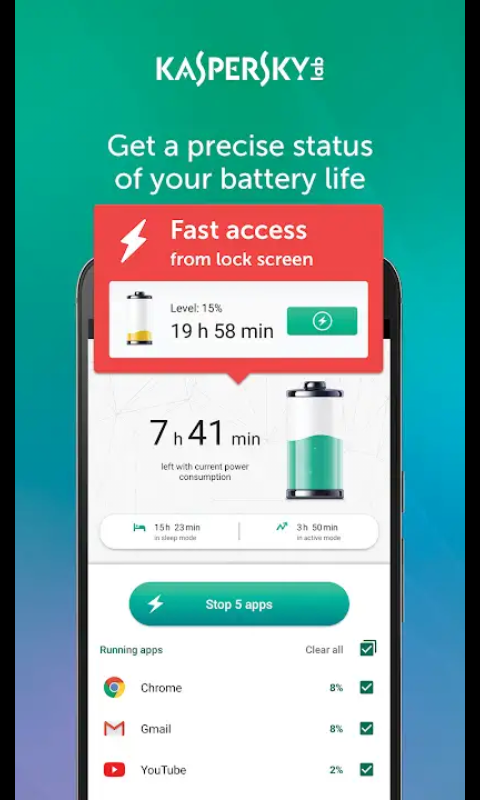 These are the go to options for cold weather starting, you will probably also need a battery warmer, unless you can keep your quad stored in a temperature controlled garage when not in use. I talk more about battery temperature later on in this article.
These are the go to options for cold weather starting, you will probably also need a battery warmer, unless you can keep your quad stored in a temperature controlled garage when not in use. I talk more about battery temperature later on in this article.
One of the main reasons an ATV battery will stop working is because the terminals have gotten corroded. You may see gunk start to build up on the terminals of the battery where the leads are connected.
After a while this build up can prevent a good connection with the wires to the terminals. If that’s the case, the ATV won’t be getting power and won’t start up. It can also reduce the life of the battery if these terminals aren’t cleaned and kept in good working order.
To clean the battery terminals, remove the leads connecting to them first. Use a wire brush to remove all the corrosion and build up around the terminals. A good battery cleaner will help with this part.
After you’ve cleaner the terminals and connections nice and thoroughly, apply a battery terminal protective solution to prolong the life of the battery.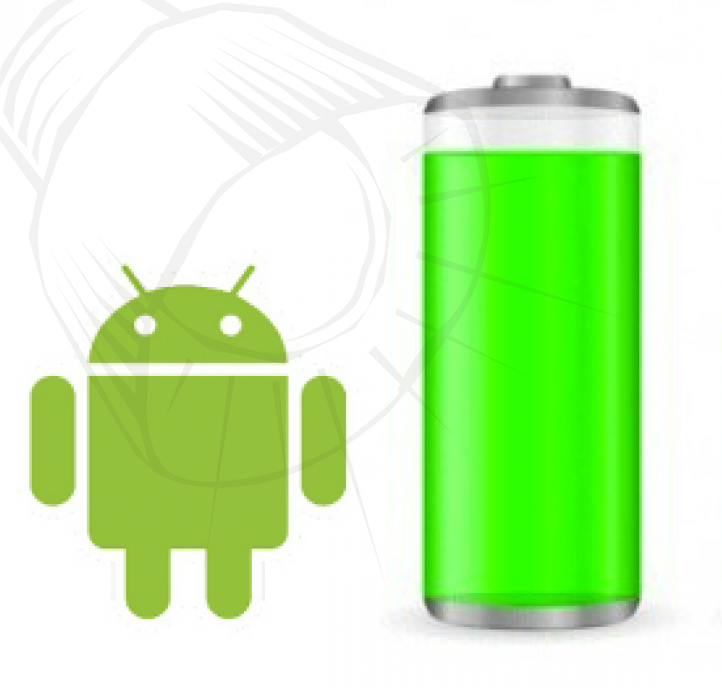 You can usually find this stuff online pretty cheap, or if you don’t have time to wait for shipping, a local auto-parts store usually carries it.
You can usually find this stuff online pretty cheap, or if you don’t have time to wait for shipping, a local auto-parts store usually carries it.
I use this Battery Cleaner with Acid Indicator and Terminal Protector Package from Amazon. I like the acid indicator feature the battery cleaner has. The cleaner will actually change color from yellow to pink if it comes in contact with battery acid. Your battery should not be leaking acid so if you see that happening, it’s time to replace your battery.
When your quad is running, the stator will do its job and keep the battery from draining. But when the engine is going to sit for anywhere past a couple weeks, you should be putting the battery on a charger to keep it topped off.
The constant drain and recharge of a battery will wear it out over time. If you don’t keep the battery charged, you’ll be lucky if it lasts you past two years. The more time the battery can spend on a full charge, the longer it will last.
I go into more detail about this in my article How To Charge An ATV Battery. But basically, you’ll need a good trickle charger to plug into whenever your not riding the ATV. It’s not a big deal if you don’t plug it in over night, but like I said, if it’s going to sit for more than a couple weeks, you should put it on a charger.
I use this Ctek Smart Charger from Amazon, and I’ve never had problems with it. I like this charger because it will charge the battery til full and switch over to maintain mode, where it keeps the battery topped off until you need it again.
Also, the cool thing about the Ctek charger is you can get this Ctek Comfort Indicator Connector that you can hook up to the battery and leave it connected. That way you can easily hook the charger up when you’re done riding without having to remove the seat or any battery covers to get to it.
This is only something to really worry about if you live in cold areas, or like to ride often during winter. Extreme heat is a problem too don’t get me wrong. Most batteries are only rated for charging or using in temperatures under 120 degrees Fahrenheit. So if you’ll be riding around in a 120 degree desert, maybe take it easy.
Extreme heat is a problem too don’t get me wrong. Most batteries are only rated for charging or using in temperatures under 120 degrees Fahrenheit. So if you’ll be riding around in a 120 degree desert, maybe take it easy.
But the cold is a lot more likely to be the problem is most areas. A standard ATV battery is rated for charging and using as low as -4 degrees F. If you plan on riding in temperatures even close to that range, read my How To Prepare Your ATV For Winter Riding article.
I want to talk about battery temperature because it’s not just what the battery is rated for use. Sure your battery will work when it zero degrees, but the performance of the battery drops drastically the colder the temperature is.
The colder outside it is, the faster your battery will discharge. A battery can also drain power over time if it sits in cold weather for too long. Even if you don’t ride in the cold, letting the battery sit out in cold temps will diminish the battery life.
Your best bet is to take the battery inside to leave on a charger, or keep the ATV stored in a heated or temperature controlled garage. If you don’t like either of those options, you could always get a battery warmer.
You will need to plug it in, but if you can get the warmer under the battery or snuggly on one side of it, you won’t have to remove the battery to bring it inside on a cold winter night. You’ll just have have an extension cord nearby that you can plug the battery heater into.
I would have a look at this Zerostart Wolverine Silicon Pad Battery Heater from Amazon if you decide this is the route you want to take. Living in cold areas can make taking care of a battery a pain.
No one wants to have to take the battery out of their machine every single cold night throughout the winter. A battery warmer can help with that. Do not use a battery heater if the temperature is above 50 degrees F.
Sharing is caring!
A battery is an autonomous power source that accumulates energy when charging from the mains and gives it to the operation of electrical equipment. The battery works in a cyclic charge-discharge mode. Therefore, the resource of its work is measured not by years of operation, but by the number of operating cycles until the moment when the initial nominal capacity decreases by 20%.
The battery works in a cyclic charge-discharge mode. Therefore, the resource of its work is measured not by years of operation, but by the number of operating cycles until the moment when the initial nominal capacity decreases by 20%.
For example, for Li-ion batteries, the service life is about 1000 cycles, and for LiFePO4 - more than 2000. Gradually, irreversible processes occur in the structure of the batteries, due to which the nominal capacity decreases, and the run distance per charge decreases. When the battery capacity drops to a point where the battery becomes uncomfortable to use, it must be replaced. nine0003
However, battery life can be extended by proper use, charging and storage. When buying batteries separately or as part of equipment, it is advisable to immediately read the manufacturer's instructions and follow his recommendations. Each manufacturer provides precise recommendations for charging, use, optimal temperature and storage conditions for a particular battery.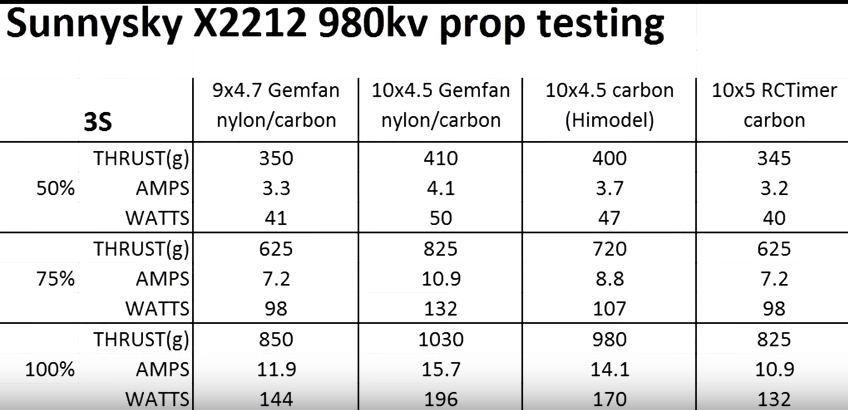 But there are also general rules, the observance of which allows you to extend the service life and increase the efficiency of using the battery. nine0003
But there are also general rules, the observance of which allows you to extend the service life and increase the efficiency of using the battery. nine0003
To prevent premature wear of the lithium-ion battery, it is necessary to protect it from deep discharges. Do not wait until the battery is discharged "to zero" and turns off. It is better to put it on charge with a residual charge level of at least 10-20%. Lithium batteries do not have a memory effect, so they can be charged at any level of residual charge.
Remember that Li-ion batteries do not like deep discharge, and after long-term storage in a discharged state, they degrade: they lose capacity and may even completely lose their working capacity. After each discharge "to zero" the batteries lose a few percent of their nominal capacity, so frequent deep discharges lead to a critical decrease in capacity. nine0003
Li-ion batteries must be charged with compatible chargers that work according to the CC / CV algorithm.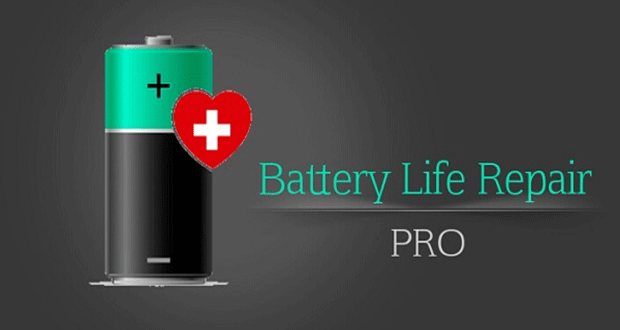 At stage 1 of charging, the current is unchanged, and the voltage increases to the set maximum - 4.2 V per cell (for LiFePO4 type cells - up to 3.65 V). After this, stage 2 begins, in which the voltage does not change, and the charging current decreases to a minimum. This is how the final 5–10% of the charge is collected. When using such an algorithm, a full charge of the batteries is ensured without the risk of overcharging them. nine0003
At stage 1 of charging, the current is unchanged, and the voltage increases to the set maximum - 4.2 V per cell (for LiFePO4 type cells - up to 3.65 V). After this, stage 2 begins, in which the voltage does not change, and the charging current decreases to a minimum. This is how the final 5–10% of the charge is collected. When using such an algorithm, a full charge of the batteries is ensured without the risk of overcharging them. nine0003
Lithium batteries should be charged at a temperature of +1 - +40 °C, with charging currents from 1C to 5C. To protect against overcharging, overheating and other dangerous conditions, batteries must be equipped with BMS boards. Additional protection is provided by the sensor in the charger. Do not cover the battery or charger while charging. After staying in the cold, the battery must be kept for several hours at room temperature and only then put on charge. It is desirable to charge the battery until the capacity is fully restored, but if this is not possible, incomplete charges are also acceptable.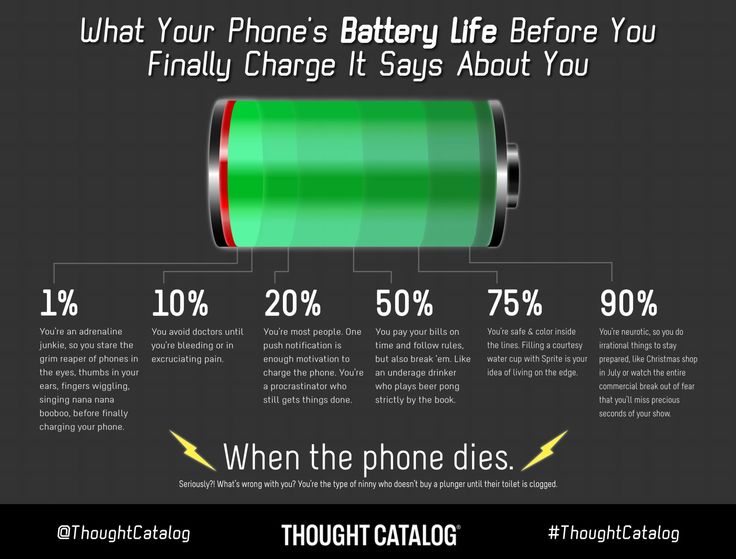 nine0003
nine0003
Batteries are equipped with standard chargers, which are optimally suited for replenishing their charge. But if necessary, you can buy a charger separately from the battery. The main thing is to choose a device designed for a specific type of battery, corresponding to it in terms of voltage and charging current.
For example, chargers for Li-ion batteries limit the maximum charge voltage to 4.2 V per cell, and chargers for LiFePO4 batteries limit the maximum charge voltage to 3.65 V per cell. There are also universal chargers on sale that are configured for different working conditions. The use of an inappropriate charger will lead to a decrease in capacity, a reduction in battery life, or its complete failure. nine0003
Temperature plays an important role in extending the life of Li-Ion batteries. Lithium batteries are sensitive to low temperatures, which is manifested by a temporary decrease in their capacity (reserve of output energy):
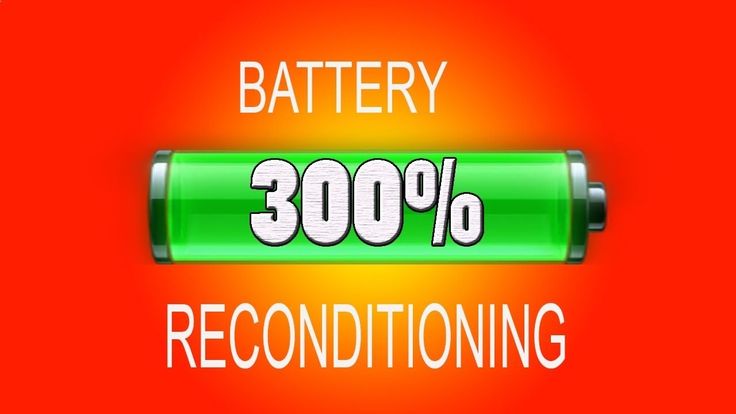
In general, Li-ion batteries operate at temperatures from -20 to +50 °C, some types - from -40 °C. But low and high temperatures negatively affect the characteristics of batteries, including reducing their service life. Therefore, it is best to use lithium batteries at a temperature of about +20 °C (±10 °C), store at a temperature of 0 to +10 °C, and charge from +5 to +20 °C. Following these tips will help keep the battery working for a long time and prevent its premature aging. nine0003
If the Li-ion battery is not used during the cold season, it must be stored comfortably:
If the battery is stored for more than 3 months, it is advisable to make it a control discharge to 10-20%, followed by a charge to 45-60%. This simple method will help extend the life of the battery and keep its capacity at a high level. nine0003
This simple method will help extend the life of the battery and keep its capacity at a high level. nine0003
A previous article on the VoltBikes blog discussed the possibility of using a motor wheel as a generator for home wind power.
Photo avtovzglyad.ru
90 , gearboxes and gearboxes suspects even the most irresponsible ATV owner. But what to do with the undercarriage of an all-terrain vehicle, so that it faithfully serves for many, many seasons, even hardened lovers of mud are not always known. The portal "AutoVzglyad" will help to understand the problem. nine0003
Dmitry Zlenko
The chassis of an ATV can, by and large, be considered a consumable item. Some manufacturers make parts and assemblies with a large margin of safety (for example, to make a hodovka on a Yamaha Grizzly, you need to really try), others deliberately underestimate the resource life in order to force brand fans to visit dealer service centers as often as possible.
Some manufacturers make parts and assemblies with a large margin of safety (for example, to make a hodovka on a Yamaha Grizzly, you need to really try), others deliberately underestimate the resource life in order to force brand fans to visit dealer service centers as often as possible.
Chinese, Russian and some American manufacturers especially sin with such a "customer-oriented" approach. Meanwhile, in order to extend the service life of even a not very hardy walker, it is enough to regularly service it even with inexpensive, but extremely effective means. nine0003
Photo avtovzglyad.ru
Let's start with the suspension arms. If there are silent blocks in them - levers, then nothing needs to be serviced here, we just ride until the silent blocks are "tired". But much more often, quadric levers work on pressed plastic bushings, inside of which there are spacer metal bushings.
When driving through mud, water with small fractions of sand inevitably gets inside this structure, and the plastic bushings begin to wear out, and the metal bushings begin to rust. To prolong the life of the suspension arms and knuckles, after each ride, these components must be injected with grease. And best of all, as practice shows, this should be done with the help of high-temperature grease for LM 50 Litho HT bearing hubs. It is clear that temperature anomalies do not occur in the bushings of the suspension arms, but the beauty of the drug is that it is universal: that is, this “gel” can process both bushings of fists and suspension arms, as well as driveshaft crosses and wheel bearings. nine0003
To prolong the life of the suspension arms and knuckles, after each ride, these components must be injected with grease. And best of all, as practice shows, this should be done with the help of high-temperature grease for LM 50 Litho HT bearing hubs. It is clear that temperature anomalies do not occur in the bushings of the suspension arms, but the beauty of the drug is that it is universal: that is, this “gel” can process both bushings of fists and suspension arms, as well as driveshaft crosses and wheel bearings. nine0003
It should be noted that LM 50 Litho HT absorbs impact loads well, adheres excellently to the surface, and is highly resistant to water. The temperature range of its use is from −30°С to +140°С. And do not forget that regular maintenance of the walker not only prolongs its service life, but also guarantees your safety. After all, a wheel that has fallen off at speed or a wheel bearing that has become wedged is not such a rare occurrence for ATVs.
Photo avtovzglyad. ru
ru
Photo avtovzglyad.ru
True, to do this simple procedure is oh how difficult. Since bolts with a nut tend to rust, sometimes the threaded connection will turn sour so that the wrench will break rather than the nut will break off. Another product from Liqui Moly will relieve such torment - a rust solvent with molybdenum disulfide MoS2-Rostloser. nine0003
This spray is specially designed to remove rust and facilitate the subsequent dismantling of threaded parts in cases where the threads are damaged by corrosion. The agent perfectly dissolves iron oxides and has a high penetrating power. And a special substance, molybdenum disulphide (MoS2), provides lubrication to the threads, which levels the presence of damage caused by corrosion on it. To unscrew the soured rusty nut, just pop on the connection, wait a few minutes and take the keys. By the way, MoS2-Rostloser, among other things, protects the parts treated with it from corrosion. A very useful tool for any country garage, because it is useful not only for the repair and maintenance of an ATV. nine0003
A very useful tool for any country garage, because it is useful not only for the repair and maintenance of an ATV. nine0003
There are components in ATVs and UTVs that, on the one hand, need care and lubrication, but on the other hand, the use of “greasy”, non-drying compounds is not allowed, since this will stain riders' clothes. For example, ATV seat locks, buggy door hinges, UTV pedal assemblies. But for knowledgeable people, this, frankly, is not a problem.
Photo avtovzglyad.ru
Photo avtovzglyad.ru
So, in the Liqui Moly product line there is a dirt-repellent white grease Wartungs-Spray weiss. The agent forms a lubricating layer to which dirt, dust and moisture do not stick. And what's more: it prevents the formation of rust in the places of application, prevents the formation of so-called frictional corrosion. The resulting soft layer of non-sticky lubricant tightly “clings” to the contact point, reducing the friction of parts and protecting, among other things, from freezing of parts.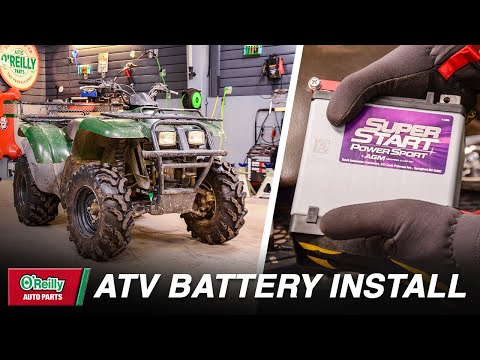
A logical question: is it possible to treat ignition locks with this lubricant, because, after all, moisture also gets into them and the larva eventually becomes completely unusable. In principle, nothing bad will happen to the castle, but white stains around will hardly please. And if you consider the ignition locks of BRP ATVs, into which keys with chips are inserted, then the use of such a composition can, in theory, prevent normal reading of the code. nine0003
In fact, for the maintenance of ignition locks and other contact areas where a non-tacky lubricant is needed and oil or silicone compounds cannot be used, Liqui Moly has developed a PTFE-Pulver-Spray Teflon Spray. It forms a dry, transparent and at the same time water-repellent layer on rubbing surfaces, to which dirt and dust do not stick at all. PTFE-Pulver-Spray is free from oils, fats and silicones and is neutral even to sensitive plastics and rubber. It's a little expensive, but the investment, as they say, is worth it . ..
..
Photo avtovzglyad.ru
Photo avtovzglyad.ru
Another chemical composition useful for a country garage is a colorless silicone grease Silicon-Spray. Used to lubricate contact areas containing plastic or rubber parts.
Liqui Moly Silicon-Spray eliminates plastic squeaks (especially true for quadrics, because all of their bodies are made of plastic, which eventually begins to make extraneous sounds as a result of friction of one part articulated with another. In addition, the product protects rubber and plastic parts from drying and exposure to ultraviolet light.
Photo avtovzglyad.ru
Photo avtovzglyad.ru
... Timely maintenance of ATV components, which rarely care about, with the help of the right high-tech compounds, definitely extends the service life of equipment. And most importantly, a relatively small investment in the purchase of various sprays and lubricants allows in the future to significantly save on the repair of an ATV.